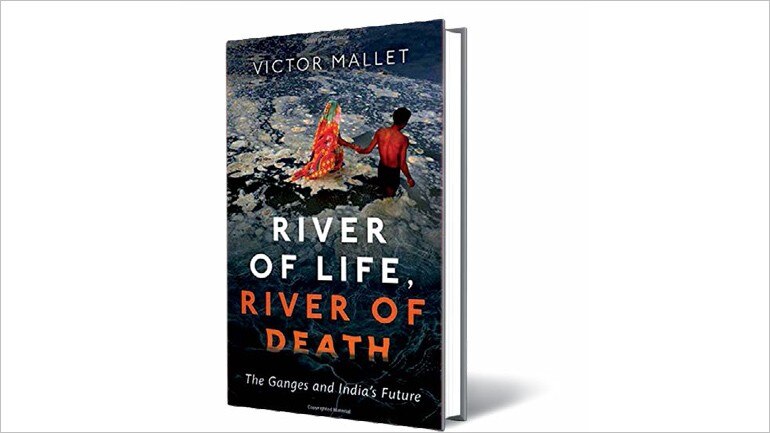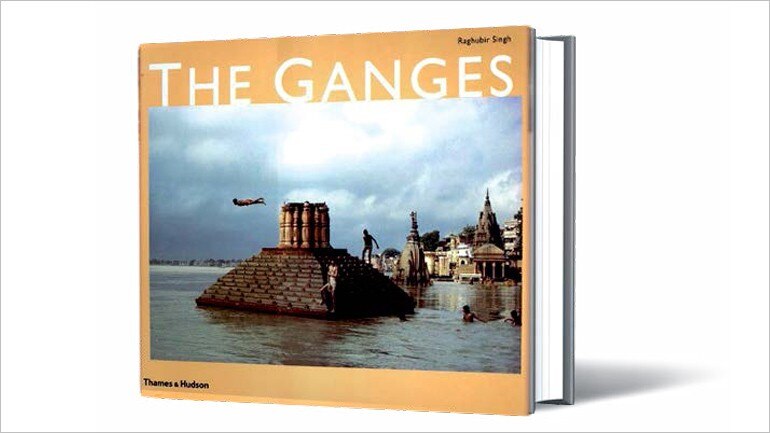

Somewhere in the middle of Ganga Ma, Giulio Di Sturco’s somewhat astonish-ing photobook, you stop at a picture that is both bewildering and pretty. A man with a hosepipe seems to be washing away snow. Since none of his pictures comes with captions, Di Sturco tells a fuller story: “I shot that outside Delhi, near where the Yamuna joins the Ganges. What looks like an iceberg is, in fact, just pollution.”

It feels discomfiting that chemical waste, dumped by factories along the Yamuna, can lather up a foam so picturesque. “I like pictures that work at different levels,” says Di Sturco. “If you stop to look at the picture you once thought beautiful, you find a second level. For me, it’s about showing that the beautiful can have a second meaning.” In a sense then, all of Ganga Ma is an un-nerving camouflage.

Working as a freelance photojournalist in India for five years (2007-2012), contributing to The New York Times, National Geographic and Le Monde, Di Sturco felt he wanted to dig deeper. He was dissatisfied with the pictures of military atrocity he’d taken in Kashmir. “The picture says everything there is to say. I don’t want to say anything. I want people to see what they want. They need to get involved.”
Di Sturco, who now identifies himself as a documentary visual arts photographer, started travelling across India in the winter. In the mornings, the light was soft. The photographer knew the sun had risen. He just couldn’t see it. “Then you realise this isn’t just winter haze, it’s again pollution.” More than 90 per cent of Ganga Ma’s pictures, shot through the filter of smog, appear desaturated.

“When you see pictures of the Ganges taken by westerners, you see a lot of colour, a lot of people bathing, a lot of religion. That all happens, yes, but the Ganges is much, much more than that,” says Di Sturco. For him, the Ganga is metaphor and contradiction. “It feels incredible to me that you pollute, without any remorse, the very river you consider holy. There’s this idea that the Ganga has the power to clean itself. It doesn’t.” Suddenly, the book’s title stops seeming ardent. It’s more of an angry alarm.

Ganga Ma’s postscript is a Vandana Shiva essay, ‘India Lives, if Ganga Lives’. The environmentalist reminds us that if the Gangotri glacier “retreat continues, the Ganga will become a seasonal river”. Di Sturco can’t emphasise this point enough. Even though he didn’t want to follow a typical route along the river, he knew Gangotri was a box he needed to tick. Seven years after his first trip there, he returned to a spot from where he had shot a glacier, only to find it had melted. “That was just crazy.”

Unlike earlier Ganga photobooks, this one never shows it as abundant. In a striking picture of the Bhairab railway bridge, a point where the Ganga enters Bangladesh after passing through the Farakka dam, the river is a trickle. In the distance, people loiter under the bridge, exaggerating its redundancy. Di Sturco says, “I wanted to show that you can’t just look at the Ganga through an Indian lens. It affects Bangladesh too, a country where the sea levels are rising. Also, my story is not just about the Ganges. I use it as metaphor, to talk about issues affecting the world-climate change, pollution, urbanisation.”



The issue of climate change, feels Di Sturco, cannot be served with an image of a plastic bottle in a forest: “People are a bit saturated with pictures like that. We should find a new way to address what’s important, try something different. To draw people in, we need a new aesthetic.” Based in London and Milan, Di Sturco turned 40 last week. Ten of those years, he has spent photographing the Ganga. Was the endeavour worth a full decade? “The Ganges is the beginning of everything,” he says.
read the full story about A river runs aground
#theheadlines #breakingnews #headlinenews #newstoday #latestnews #aajtak #ndtv #timesofindia #indiannews

Leave a Reply